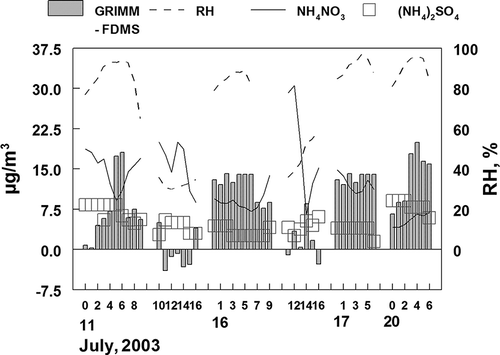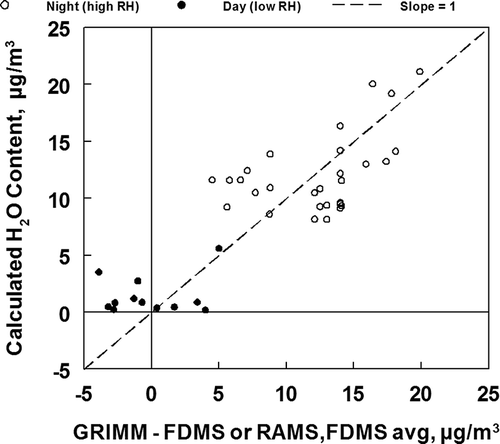Figures & data
Figure 1. Data from the Lindon 2012 study, including hourly averaged values of FDMS-measured PM2.5, nephelometer-measured Bp, scat, and RH.
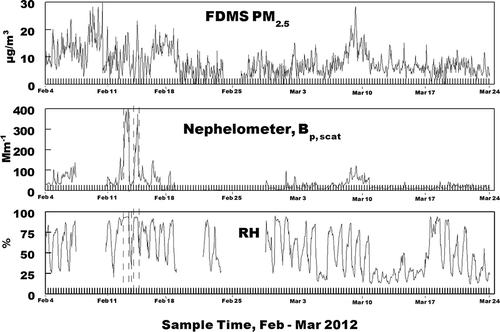
Figure 2. Variation of nephelometer response (corrected for coarse particle scattering) with FDMS PM2.5 from the Lindon 2012 study. Linear regression of open data gives a mass scattering efficiency of 3.3 m2/g. The black closed data points are associated with ambient RH > 80%. The gray closed data points are associated with ambient RH from 65 to 80%. The increased scattering associated with this data can be attributed to particle-bound water that is not measured by the FDMS TEOM.
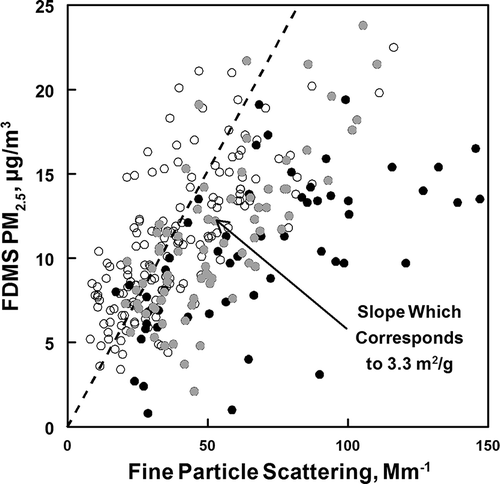
Figure 3. Average composition of FDMS measured PM2.5 during February 9–10 in the Lindon study. Indicated species are nonvolatile organic material (NVOM), semivolatile organic material (SVOM, estimated as the difference between the FDMS TEOM measurement and the other measured constituents), sulfate and nitrate (present as the ammonium salts), and black carbon (BC). Concentrations are µg/m3.
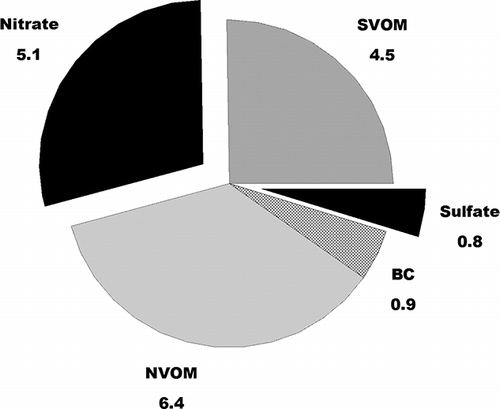
Figure 4. A comparison between light scattering, percent RH, PM2.5, and black carbon from March 8–11. The trends shown here indicate that secondary aerosol formation is likely the dominant contributor to light scattering, since scattering continues to increase after the end of the black carbon peaks.
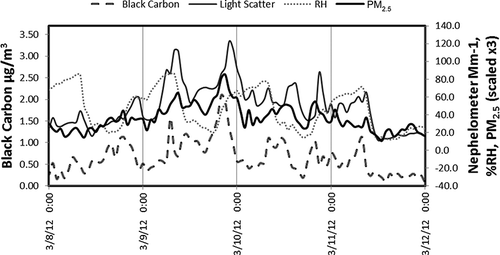
Figure 5. Comparisons of PM2.5 data obtained using the Grimm model 1.107 with (A) FDMS TEOM PM2.5 mass and (B) the average of FDMS TEOM and RAMS measured PM2.5 mass. The difference between and Grimm and other mass measurements is shown, in addition to relative humidity. All results are hourly averaged measurements.
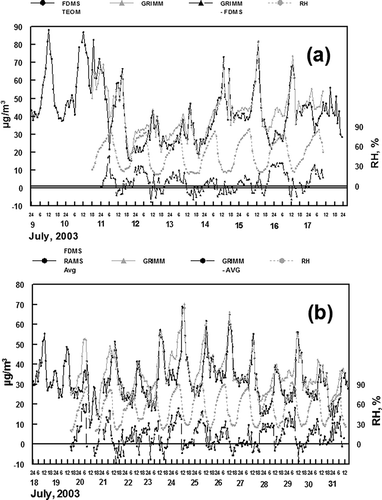
Figure 6. Relative humidity, NH4NO3, and (NH4)2SO4 data used to estimate the uptake of water by the fine aerosol being sampled. Data given reflect the day and hours when the sulfate and nitrate data were available. The hypothesis was that the positive differences between the Grimm monitor and comparison samplers was due to aerosol water.
